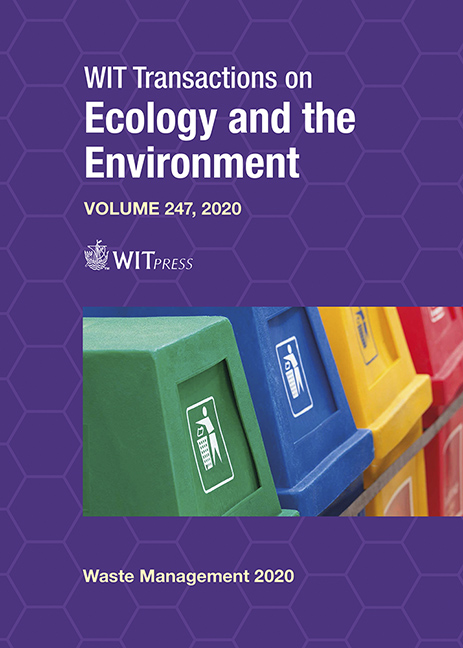POTENTIAL INTEGRATED SMART WASTE SEGREGATION FOR ALL STAKEHOLDERS
Price
Free (open access)
Transaction
Volume
247
Pages
11
Page Range
125 - 135
Published
2020
Paper DOI
10.2495/WM200121
Copyright
WIT Press
Author(s)
BARMAK SADRI, BARAT ALI KHAKPOOR, MOHAMMAD AJZA SHOKOUHI
Abstract
There are formal and informal recycling workers as a part of the mainstream and resource management system that are handling separation of waste at source duties instead of urban dwellers who are facing the loss of aesthetic value of their cities. Less recycling wastes remain in the strewed waste bins to serve a circular economy from this disgusting perspective where uncontrolled waste collection, recycling, treatment, and disposal is likely to have health impacts on such workers. Further, their operations cause dispersal of contamination and debris that do not sound effective and environmentally waste management for a clean city and a pleasant and healthy living environment that is attractive to residents and visitors. The increasing number of informal workers demonstrates unsuccessful strategies of separation of waste at source and aborted due to lack of citizens engagement. Recently smart technologies emerged that sound useful to tackle the issues due to its capabilities of monitoring waste stream. Hence, the investigated performance indicators by scholars to improve waste management, reviewed in this study to develop a model for smart waste recycling. The service design approaches employed to be compatible to local infrastructures of the studied cities of Tehran and Mashhad in Iran that the potential smart waste segregation model figured out, based on integrated smart identification of all stakeholders, to apply legislation for citizens, communities and advocates, and private sector, and to provide monitoring and measurement tools about recycling waste and 4R (reduction, reuse, recycling, recovery) procedures. The system could be implemented in similar metropolises like Ankara, who face such issues. Further local analysis for technology acceptance evaluation should apply to refer client types, generation, and local infrastructures whether a combination of different identification and pickup methods will meet their satisfaction and improve the waste management system.
Keywords
informal recycling workers, separation of waste at source, monitoring waste stream, integrated smart waste recycling, smart waste identification, potential smart waste segregation system, disgusting perspective of cities, SAAS, DSS, circular economy





